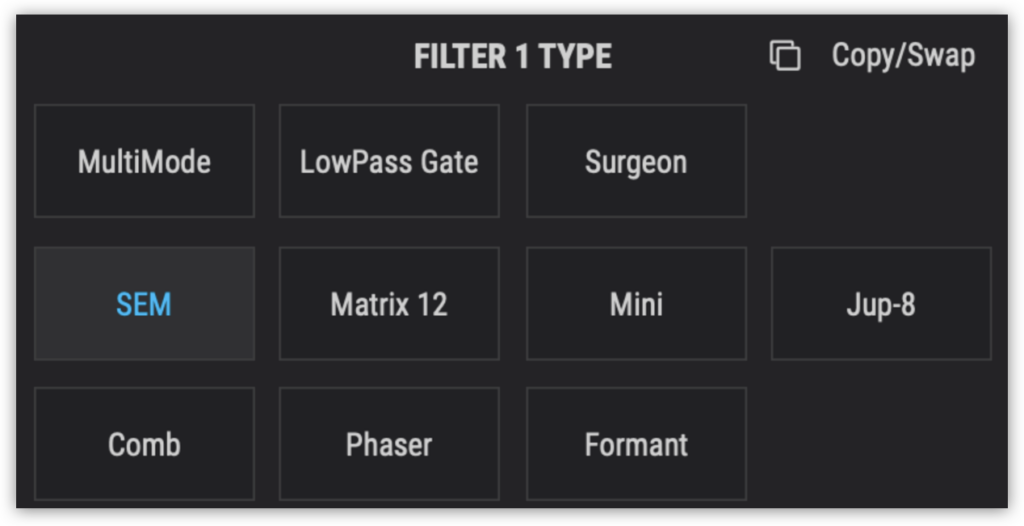Illustration: Filip Fröhlich
In the context of music production, a filter is a signal processing method where certain frequencies are either attenuated or emphasized.
In this article, we examine some of the different digital filters and filtering techniques that are available to musicians—but first, let’s briefly address some of the differences between analog and digital filtering.
Analog filtering
Analog filters take a signal and run it through a circuit (or series of circuits) to remove frequencies. Since analog filters utilize real-world physical hardware, they can be slightly less predictable when compared to digital filters. For one, analog filters can ‘drift’ based on outside variables like the temperature of the component circuits, a phenomenon that digital filters don’t experience. This makes digital filters more stable, but stability isn’t always the most desirable trait when making music—analog might be more pleasing to some of our ears, precisely because its instability can provide our sounds with more ‘character.’
Digital filtering
Digital filtering, on the other hand, is based on (very) complicated math that utilizes a number of different filtering algorithms such as Chebyshev, Elliptic, and Butterworth. Digital filtering has a few obvious advantages over analog: you can manipulate parameters easily, scroll between presets, save configurations for later, and pick up where you left off whenever you want. Additionally, since digital filters don’t use dedicated circuitry for signal processing, they’re much more stable and less subject to changes in real-world variables like temperature.
Today, modern producers expect that a filter has several options. Generally speaking, it’s par for the course for a digital filter to have all of the basic filter options: high-pass, low-pass, band-pass, and maybe notch filtering. So what’s the difference between one digital filter and another? Why do plugin developers spend so much time working on creating different filter options for users to employ?
Interestingly enough, digital filters are often based on software that emulates analog filters! To provide some examples, we’ll use Arturia’s Pigments 3 since it features both emulation and digital-focused options. Along with the standard filtering options found under the MultiMode filter, the synth also features four analog recreations: the SEM, Matrix 12, Mini, and Jup-8.

The sound of different filter emulations
In the following examples, I’ve bounced some chords using identical sawtooth patches that are identical in every way except for the filter. Then, I automated each one to perform an identical filter sweep. Can you hear the difference between the emulations?
Oberheim Matrix 12:
Mini (Moog Ladder):
Jupiter 8:
Oberheim Synthesizer Expander Module (SEM):
Although some of the differences may be subtle, all of these different filter emulations are intended to recreate the sonic characteristics created by the variability of the physical circuitry used in analog filter systems. To my ears, the Moog filter emulation is the most distinctive; it has a rich, creamy sound thanks to the ladder transistor system developed and implemented by Bob Moog.
The sound of different filter types
Some other filters simply use different algorithms that don’t try to emulate anything in particular, but are well-suited for the digital world. Although examples of these filters exist in analog formats for music production purposes, they’re commonly used in digital synth patch design as well. Let’s listen to a few more intense examples of filters that are perhaps better suited for the digital realm.
Comb:
Phaser:
Formant:
In these examples, the differences between the sounds of the filters are profound. Instead of simply attenuating frequencies above the filter cutoff value, these filters color the sound in entirely different ways—comb filters introduce multiple notches to the signal, formant filters boost certain frequencies to imitate the harmonics of vowel sounds, and phasers employ delays to create musically interesting effects.
The importance of filters in music production
Filters are among the most fundamental and most essential of audio processing tools. Although the underlying principle may be simple, even just layering and tweaking filters can generate extremely interesting results. Some effects are nothing more than a combination of many filters—for example, vocoders are created using filterbanks. Filters are heard on almost every piece of recorded music, and have even spawned their own genres.
Now that you’ve got a simple introduction to the sounds of different filters and emulations, try giving a different kind of filter a shot in your next production, instead of just reaching for your go-to. I hope this post helps you have more fun attenuating frequency content in various ways—it certainly did for me!
Do you have any questions about filtering? Let us know in the comments below.
Try Pigments 3 for free, and then Rent-to-Own the synth for $9.99/mo until you own it outright:
July 13, 2021



